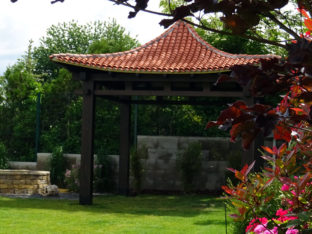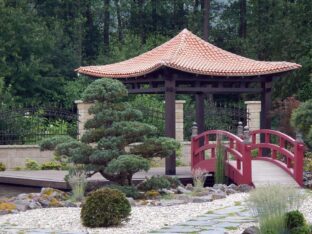Do you like a garden where is maximum space used? A garden that respects the power of nature and is an image of respect for all living and non-living things? This is exactly the characteristic of a Japanese garden. Full of plants, but also inanimate elements such as wood and stones. It is ruled by order and an atmosphere of peace and silence. You can create such a harmonious garden at home.
Basic principles of Japanese garden
If you’re excited about the idea, you’ll probably need help setting up a Japanese garden.
Get inspired by the videos you find on the web. However, it will help if you know the basic principles of Japanese garden:
- In this type of garden not only plants but also sand, stones, and water should be represented.
- Add decorative elements – vases, statuettes, sundials, carillons or fountains.
- There needs to be a stone walkway. In a Japanese garden, you should be able to walk around all the corners. Do not concrete the sidewalks, choose natural materials such as stone or wood.
- A water area should be part of the Japanese garden. If this is not possible for you, create a sandy surface and customize the sand into ripples.
- Bridges – can´t be missed in a Japanese garden. Whether only as an ornament or one that will lead over the water surface and it will be possible to walk on them. Again, they should be made of natural materials.
- Observe the symbolism of the numbers. You should pay attention to odd groupings of elements. For example, if you decide to place stones as a decorative element, always in odd numbers.
- If possible, do not lock up the garden. It should continue into the neighbouring space (ie outside your land). Or at least it should allow bypassers the opportunity to enjoy it.
- Place great emphasis on plant selection.
So which plants should you choose? Bet on bonsai and bamboo, but also Japanese cherries, Japanese maple, ginkgo, cypress, sakura, magnolia, and ornamental grasses. From the flowers, you should have peonies, roses, and irises in particular. Moss also has its place here.
The Japanese garden also includes a house or gazebo
What role does a house or gazebo play in a Japanese garden? It is a place that should become an oasis of peace and relaxation. It should provide a view of the distinctive elements of the garden – stones, plants, water, or decorations.
There are also so-called tea gardens in Japanese culture, where the dominant feature is the gazebo, also called the tea gazebo. Of course, it should also be in the Japanese style. The Hinode pavilion or Kawaii garden pavilion will stand out beautifully here, and it will become the heart of your home Japanese garden.




